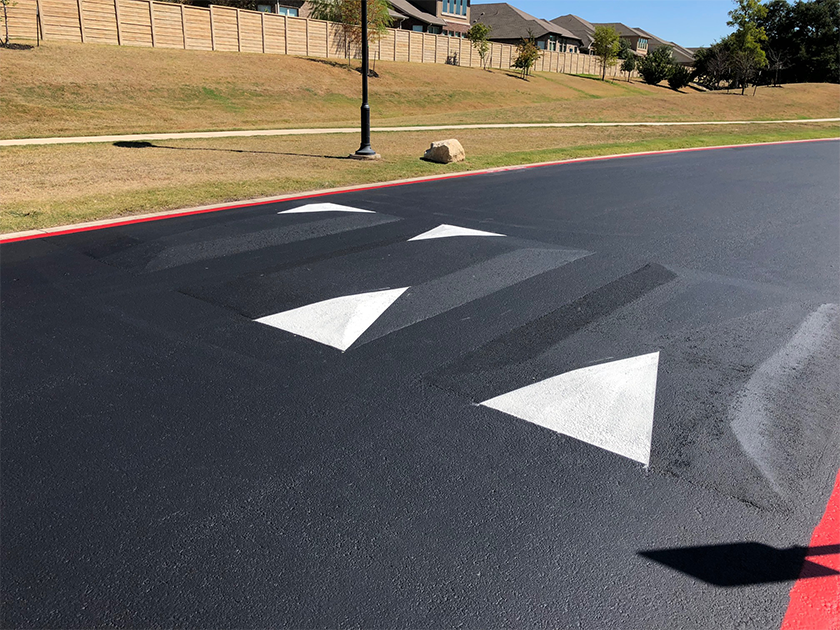Speed Bump Installation- There is a tendency for the public to refer to any permanent object placed in a roadway for the purpose of slowing the speed of vehicles as a speed bump. However, what some people call speed bumps are actually speed humps or speed cushions. Understanding the differences between these three types of speed impediments can help you determine which will suit your needs the best.
Speed Bumps
Speed bumps are the most widely used method of reducing the speed of traffic. They are also the most aggressive method, normally used to force traffic to keep speeds below 10 miles per hour. Speed bumps are primarily found in parking lots, traffic lanes in apartment complexes and other locations in which the posted speed limit is usually less than 15 mph. Because vehicles encountering a speed bump at a high speed can be damaged or lose control, speed bumps are not suitable for streets with high speed limits. Speed bumps also slow the progress of traffic, so they are likewise unsuitable for heavily traveled roadways.
Speed Humps
Speed humps tend to be wider and shorter than speed bumps. Most speed humps extend the entire width of the pavement when placed in a street. Although they reduce speed, they allow for a continuous flow of traffic and are a less aggressive method of controlling speed than speed bumps. Speed humps are often found near school crossings, playgrounds and hospitals as well as some parking lots.
Speed Cushions
Speed cushions are often found on streets that are designated as emergency vehicle routes. They are basically modified speed humps that have been divided so that vehicles with a wider wheel base — such as ambulances and fire trucks — can straddle them and avoid delays in response time. Buses can also straddle the speed cushions to avoid jarring the passengers.
Materials Used
Asphalt is the most common material used for speed bumps, speed humps and speed cushions on both concrete and asphalt pavement. Asphalt is an economical, durable option that can be repainted and resealed as often as needed to maintain visibility and aesthetics. Depending on the application, plastic or rubber may also be used on concrete pavement.
Choosing the Best Method for Speed Control
The type of speed control you need depends on several factors. The first consideration is where the speed controls are to be placed; public streets, for example, may need different controls than private parking lots. The second consideration is how aggressively you want to control the speed of traffic; aggressive traffic control is often chosen for areas with high volumes of pedestrian traffic. A third consideration is the layout of the pavement on which speed controls are to be installed; placing an aggressive speed control immediately after a blind curve, for example, is usually a bad idea. The fourth consideration is the number of vehicles that are expected to cross the speed control on an average day; areas with high traffic volumes may need an option that does not interrupt the flow of traffic substantially or cause unnecessary traffic jams.
Contact Alpha Paving for the Best Speed Controls
Alpha Paving is a full-service paving company headquartered in Round Rock, Texas. We install, repair and maintain speed bumps, speed humps and speed cushions throughout Central Texas. We offer an extensive line of asphalt and concrete services, including asphalt overlays, pavement markings, sealcoating, crack repairs, parking lot striping, road construction, new pavement installation, curbing, parking lot signs and handicap ramps. Our crews deliver quality workmanship and outstanding customer service to a wide range of clients, including retailers, municipalities, religious institutions, airports, hotels, shopping centers, restaurants and HOAs. You can request a free quote by submitting our online form or calling (512) 677-9001.
Follow us on Twitter
Another Post: Concrete Ramps




